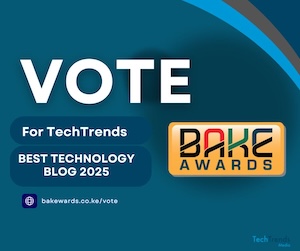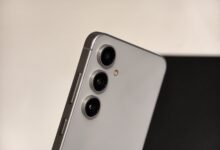
Industry experts have raised concerns about the quality and authenticity of QLED televisions being sold in the Kenyan market. Although many TVs are advertised under the “QLED” label, they don’t all utilize genuine quantum dot technology — the defining component of true QLED displays.
“Quantum dots are the heart of QLED technology. Without them, a TV cannot legitimately be called QLED,” said Sam Odhiambo, Head of Consumer Electronics Business in Kenya at Samsung Electronics East Africa. “Kenyans should take caution and look closely at what they are purchasing,” he added.
QLED, short for Quantum Dot Light Emitting Diode, is a display technology that uses nanoscale semiconductor particles known as quantum dots. These dots emit highly specific colours when illuminated, resulting in vibrant, accurate colour reproduction and significantly higher brightness. The result is a more realistic and immersive viewing experience compared to standard LED displays.
Some TV models marketed as QLED or similar alternatives do not contain quantum dots at all. Instead, these TVs rely on standard white backlights or conventional LED panels, which can lead to lower brightness, reduced colour accuracy, and less lifelike images.
“Some brands are using conventional display technologies but selling their products at price points similar to true QLED TVs. This raises serious concerns about transparency and the value offered to consumers,” said Sam Odhiambo.
Samsung Electronics Company continues to reiterate its commitment to genuine QLED innovation. The company’s QLED TVs deliver 100% colour volume, superior brightness levels of up to 2,000 nits, and a cadmium-free design that is both environmentally responsible and high-performing.
“Samsung QLED TVs use a specially engineered quantum dot film to ensure consistent performance, rich colours, and long-lasting durability. In fact, the importance of quantum dots was recognised globally in 2023, when the Nobel Prize in Chemistry was awarded for their discovery and synthesis,” ,said Sam Odhiambo.
Samsung’s QLED TVs use green and red quantum dot films to generate over a billion shades of colour, achieving 100% colour volume and exceptional brightness. However, some QLED-labelled TVs being sold in Kenya do not use any quantum dots. This results in dimmer images and less vibrant or accurate colours due to the absence of a QD film.
Another point of concern is the potential use of hazardous substances. Samsung has eliminated the use of cadmium — a toxic heavy metal — from its displays since 2015.
Experts caution consumers that the term “QLED” is not regulated, meaning that some manufacturers may use the label without incorporating the essential quantum dot component.
“To be considered a true quantum dot TV, the product must use quantum dots to create or convert colour,” explained Professor Doh Chang Lee of the Korea Advanced Institute of Science and Technology in a recent article.
Samsung began developing quantum dot technology in 2001 and introduced the world’s first cadmium-free quantum dot TVs in 2015.
As televisions become central to home entertainment, experts urge Kenyan consumers to look beyond marketing labels. A “QLED” name alone does not guarantee cutting-edge performance.
“We encourage Kenyans to choose brands that demonstrate technological integrity, long-term innovation, and transparent communication”, concluded Sam Odhiambo.
Follow us on WhatsApp, Telegram, Twitter, and Facebook, or subscribe to our weekly newsletter to ensure you don’t miss out on any future updates. Send tips to editorial@techtrendsmedia.co.ke




